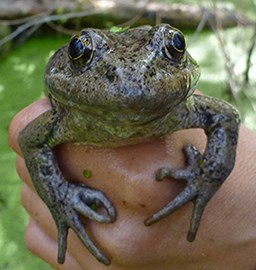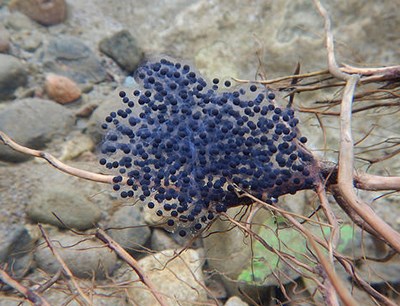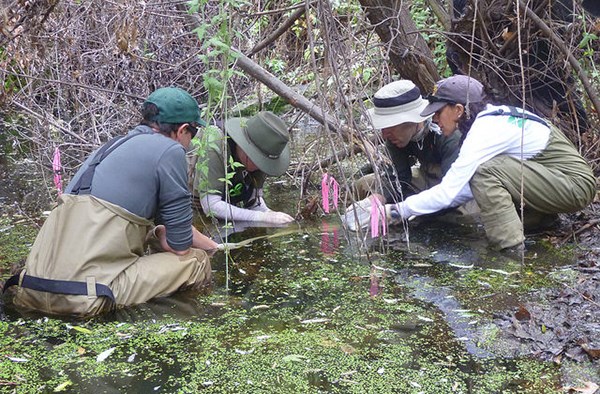
National Park Service 
Here at Santa Monica Mountains National Recreation Area, we think our frogs are absolutely ribbit-ing! So when the largest native frog species in the western United States began to decline across its former range and disappeared completely from the Santa Monica Mountains, the National Park Service sprang into action. A Frog’s TaleThe California red-legged frog (Rana draytonii) was once a common species in Southern California, primarily inhabiting streams and pools that contained water year-round. Unfortunately, Mark Twain’s famous Celebrated Jumping Frog of Calaveras County has all but vanished south of Los Angeles. The population of red-legged frogs in the Santa Monica Mountains and Simi Hills is worryingly small and isolated, and there is great concern about its long-term persistence, especially since the Woolsey Fire swept through the area in November 2018. 
National Park Service What’s the Problem?The exact reason for the decline of the California red-legged frog in Southern California is unknown. Like with many other dwindling species across the world, it’s probably due to a variety of compounding factors. 
The Happy Seasons Pre-Woolsey FireCalifornia red-legged frogs, federally listed as threatened under the Endangered Species Act, appeared to blink out of existence in the Santa Monica Mountains in the mid-20th century. The last confirmed sighting was in the early 1970s, but conservationists were not content to let an iconic species vanish without a fight. The Woolsey Fire - A Major Setback for the Rare SpeciesIn the fall of 2018, these rare amphibians were flourishing, happily eating insects, and reproducing on their own in two of the four streams spread throughout the mountains. Then the Woolsey Fire struck in November 2018 and burned up much of their habitat. This was immediately followed by a season of heavy rainfall, which caused debris flows that filled the streams with silt and mud. A year later, biologists discovered adult frogs at all of the sites that had survived the fire and silt. Currently, there are a couple of reintroduction sites in and around the Santa Monica Mountains where the frogs are thriving and back to their pre-fire breeding numbers. That's the heartening news. In others, however, the habitat was severely damaged and it's unclear how the frogs will fare in the long run. The sites remain heavily silted from mudslides that occurred when it rained post-fire and there is little suitable breeding habitat for the frogs. In recent months, the frogs at some sites have been difficult to find due to the thick vegetation and the fact that there are limited "good" pools for the frogs to hang out in. 
National Park Service What’s Next?What’s next is a good question that no one can answer yet. What we do know is that regardless of the many challenges they’ve encountered over the last several years, these frogs are much more resilient than we ever expected! As part of the NPS’ long-term amphibian and reptile monitoring program, which surveys species population annually, our dedicated team, made up of NPS ecologist Katy Delaney and biological technician Sarah Wenner, will continue to monitor the hardy population. How Can You Help?We can all take steps to help our amphibian friends and ensure them a better future. California Red-Legged Frog News Releases |
Last updated: March 19, 2021
